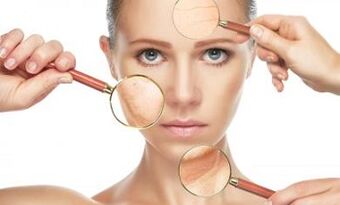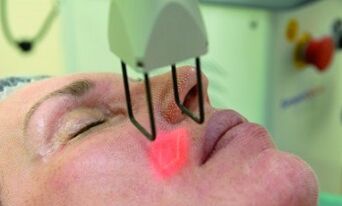
The external manifestation of skin aging is the appearance of wrinkles, enlarged pores and loss of the feeling of skin freshness. The aging process in the initial stages is almost not manifested, and, therefore, does not attract much attention, but already at the age of 25 the first signs of initial withering appear: the turgor decreases, the structure changes. Later, the skin gradually becomes thinner - the vessels become visible, areas with hyperpigmentation appear.
To restore the youth of the skin, it is not enough to eliminate only the obvious manifestations of aging - it is necessary to restore the active activity of cells, the natural mechanism of their renewal and growth. Thus, the skin will not only return a fresh look, but will become really younger. Cosmetology made a real breakthrough in 2004, when the method of fractional photothermolysis for the treatment of age-related skin changes was introduced. This technology has been clinically proven and tested - proven effective in wrinkle correction and skin rejuvenation.
Practical application has also shown that fractional photothermolysis is easily tolerated, safe and has high performance in eliminating cosmetic defects and restoring youth. Today it is one of the most reliable and promising methods of skin rejuvenation and tightening, known as the "gold standard" in solving cosmetic problems. In addition, it is a modern and safe alternative to surgical skin lift.
Course of procedure, patient feelings

An integral and enjoyable advantage of the fractional photothermolysis procedure is its painlessness - only the use of superficial anesthesia is necessary, while the sensations are limited to a slight sensation of tingling in the laser-treated area.
The anesthetic is applied before the start of the session, which lasts within an hour - the time varies depending on the size of the surface to be treated.
The specialist who performs the procedure immediately after its completion advises the patient, lubricates the skin with cream and gives detailed instructions to care for him.
It should be noted that no further special medical care for the skin is required and you can go home on your own.
Recovery period
If the surgical intervention previously required a long period of healing, then the method of fractional laser rejuvenation does not require much time: it does not take more than a week to return to the normal rhythm of life: the time depends on the method of intervention (ablative, not ablative). In the first two days after the procedure, the skin may swell slightly, on days 2-4, redness is noticed and on days 4-7, the dead cells begin to peel, releasing healthy and beautiful skin for respiration and development.
You can be sure that the fractional photothermolysis procedure made your skin look younger very quickly - after the ablative method of exposure, the skin tightens almost immediately, and generally, after a week, the wrinkles start to soften, the complexion is smoothed, the skin structureimproves, the oval of the face becomes clearer. To consolidate and maximize the result, several procedures are needed - they are performed with a change of about a month.
Fractional laser renewal lasts up to six months after the completion of all procedures, and the effect lasts for several years. In many respects, the result is determined by the patient-led lifestyle - following the doctor-prescribed skin rejuvenation program helps to significantly slow down its aging.
Combination with other methods of rejuvenation
Many patients, seeking to enhance the rejuvenating effect, want to combine fractional laser rejuvenation along with the use of botulinum toxin injections and fillers. In this case, there are no contraindications - special studies have confirmed the safety of the impact of a fractional laser on collagen and hyaluronic fillers. For those who want to perform the laser rejuvenation procedure and Botox injection on the same day, there are also no restrictions, but in order for the rejuvenation effect to be greater, it is recommended that you first complete the fractional laser rejuvenation course. Most likely, the effect achieved will not require any extra effort to restore the beauty and youth of your skin.
Contraindications to the procedure
Fractional laser rejuvenation should not be performed if there are general therapeutic contraindications:
- Benign and malignant neoplasms in the treatment area.
- Oncological diseases, radiation and chemotherapy.
- Dermatoses in the field of procedure, photodermatoses.
- Family history of vitiligo.
- Herpes infection in the last month.
- History of keloid scars.
- Acute infectious diseases or impaired immunity.
- Chronic diseases (diabetes mellitus, systemic connective tissue diseases, blood clotting disorders, thromboembolic diseases. )
- Tanning or fresh tanning in the last month.
- Use of oral retinoids in the last 6 months or use of topical retinoid dermatological agents in the last 2 weeks.
- Pregnancy, lactation.
- Mental illness.
If there is a contraindication from the procedure, you should temporarily abstain in order to ensure health safety, the same fractional laser rejuvenation procedure is completely safe.














































































